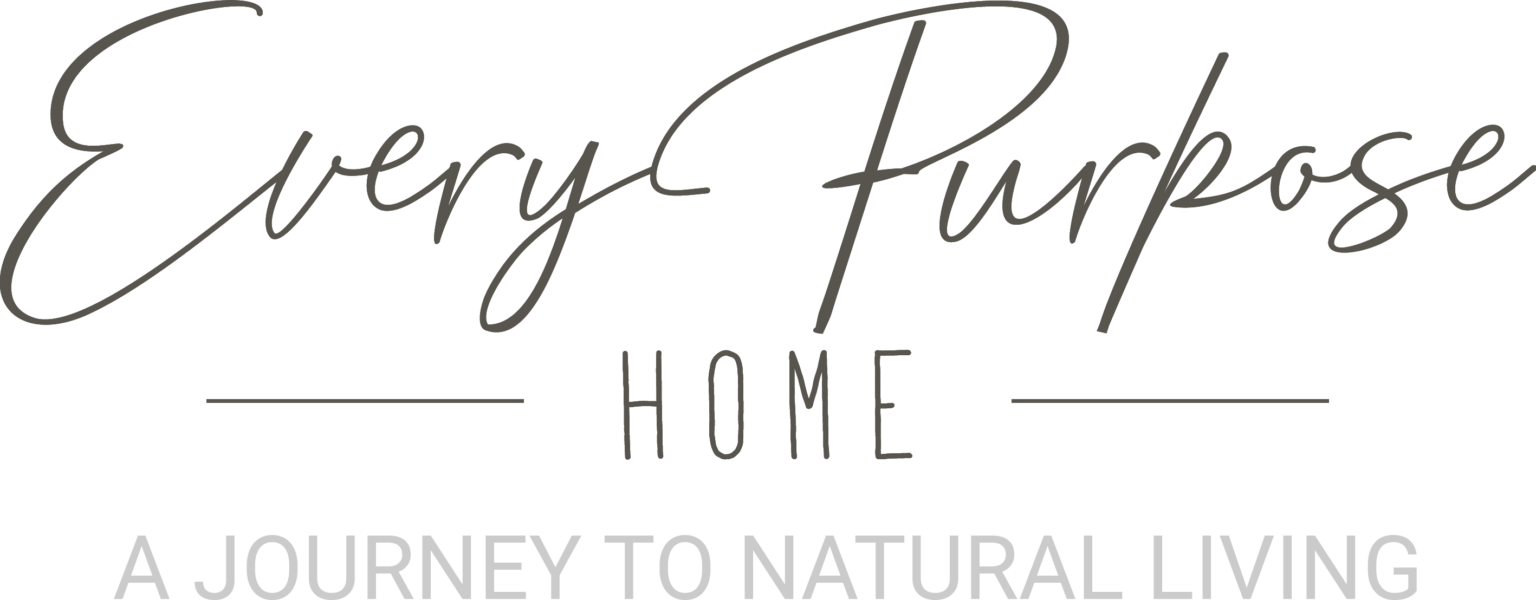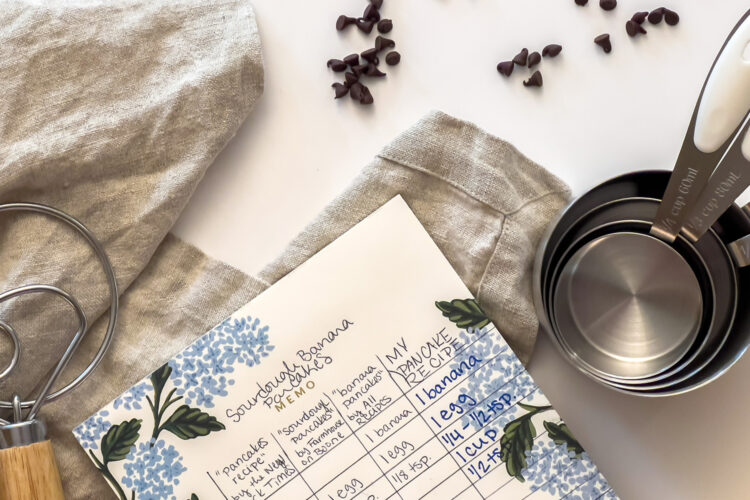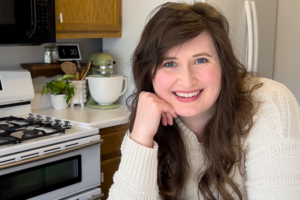Have you ever wondered where everyone gets their recipes? Maybe you have looked for a good pancake recipe, so you search for pancakes and get tens of thousands of results. How did all of those people come up with a pancake recipe? Not only that, but they’re all different in one way or another! Here, you’ll get a step-by-step guide for how to make a recipe, and how to end up with a unique recipe that is entirely your own. You can use this method to make food recipes, skincare recipes, and more!
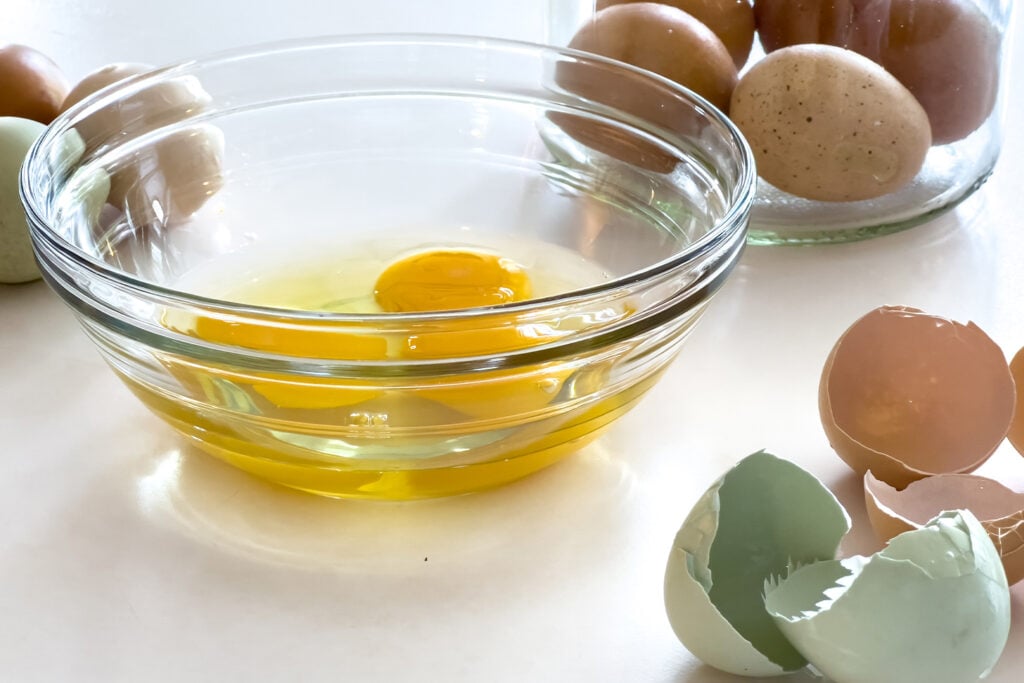
Why It Matters
There are a number of reasons that you may want to have your own recipe, instead of simply making one off Pinterest! These reasons include: you want to sell your baked goods, you want to write a recipe book, you want to post it on a blog or online somewhere, or you simply want to pass your recipe down and not someone else’s. Whatever your reason, here’s a step-by-step guide for how to make your own recipe!
I’ll walk you through how I created my Sourdough Banana Pancakes recipe, but you can use this process for any recipe that you wish to make!
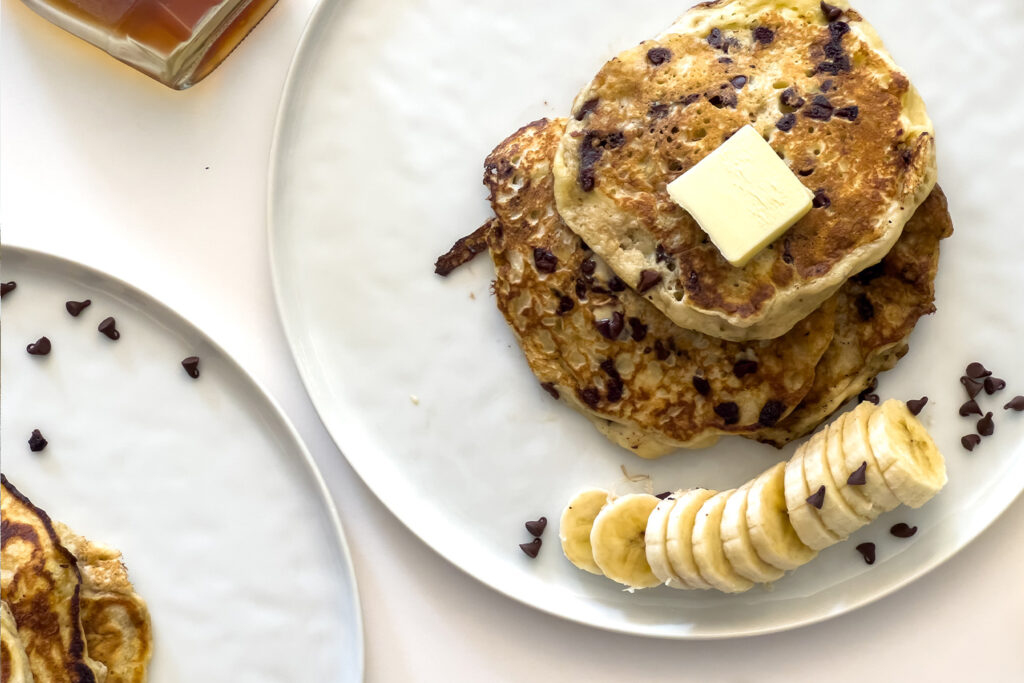
Step 1: Research Similar Recipes
This step is so simple, and yet so important! Especially if you’re newer to cooking or baking, you may not know what ordinarily goes into a certain recipe type.
For example, almost all sourdough bread recipes contain ingredients such as flour, water, sourdough starter, and salt. There may be other additions or variations, but the majority of them contain these basic ingredients. Becoming familiar with the common ingredients will help give you an idea what you should include in your recipe.
The more you make different types of recipes, the more you will learn what is needed to make them. Don’t worry if you don’t know this off the top of your head when you’re first starting out!
My Sourdough Banana Pancakes Example:
When creating my Sourdough Banana Pancakes recipe, I searched “pancakes recipe”, “sourdough pancakes” and “banana pancakes”. I then skimmed the ingredients to get an idea of what is typically in a pancake!
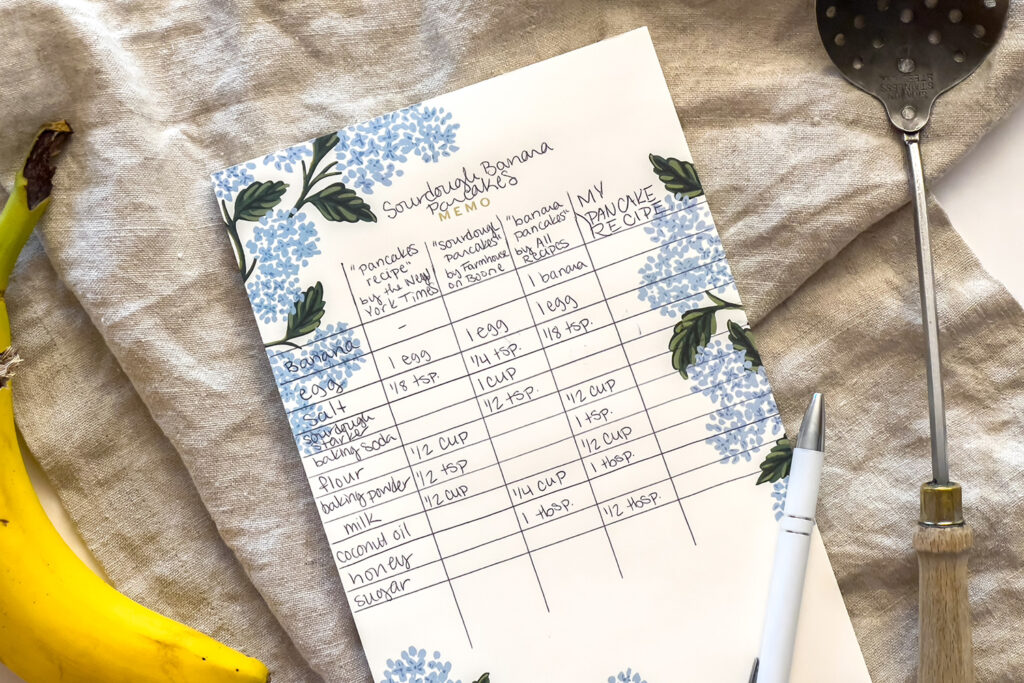
Step 2: Write Down Similar Ingredients
Now that you’ve researched similar recipes to what you’re going to make, you’re going to find three or more recipes to use as examples and give you a good starting point. I like to specifically pay attention to highly rated recipes when possible.
You’re going to make a simple chart that shows how much of each ingredient is used in the example recipes. This will make an easy way for you to plan out how much of each ingredient you are going to need in a future step. Feel free to add additional ingredients to the chart as well, if you think that they will improve the recipe!
My Sourdough Banana Pancakes Example:
I drew a blank chart on a scrap piece of paper, and then filled it out as follows. For each of my three searches in Step 1 (“pancakes recipe”, “sourdough pancakes”, and “banana pancakes”), I found a top-rated recipe. I then filled out the chart by writing the volume of each ingredient in those recipes (scaled to 5-6 pancakes per recipe, as some were designed to make 20 pancakes), as shown in the photo.
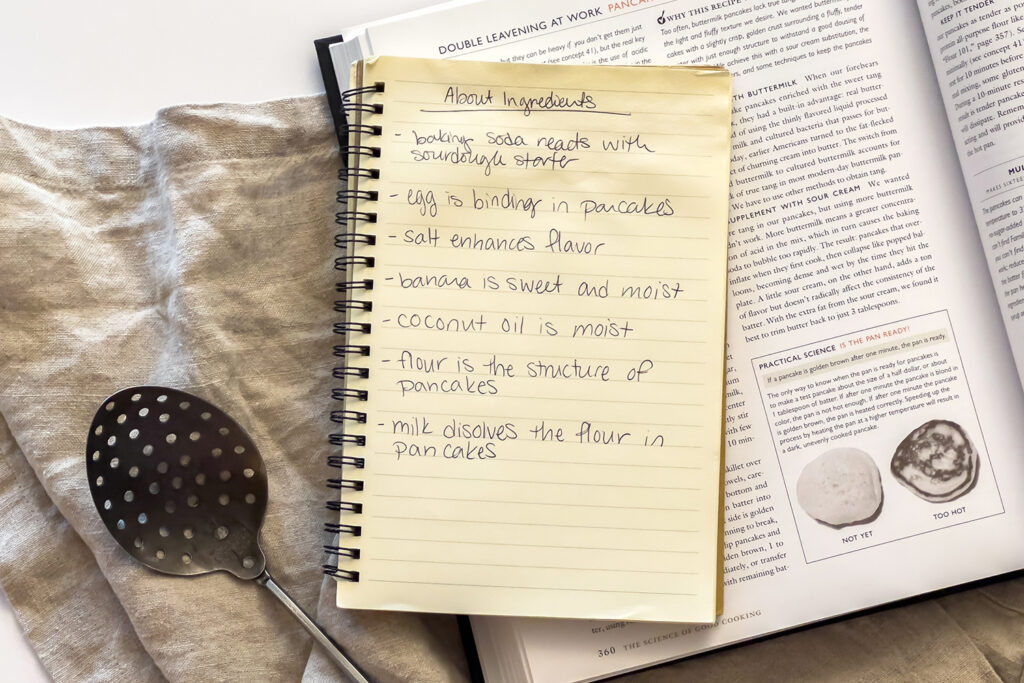
Step 3: Learn What Each Ingredient Does
Now that you’ve got a chart of common ingredients in this type of recipe, you’ll now want to understand what each ingredient does. For example, in a sourdough recipe, knowing that you have to add flour and a liquid to get rise, or knowing that salt brings out the flavors in the recipe helps you to understand how the recipe actually works. This will also help you guess what may happen if you alter or skip an ingredient.
You can research each ingredient in the context of the type of recipe you’re making, such as “what does flour do in a sourdough bread recipe?”, or you can learn about each ingredient in a broader way, such as “what does baking soda do?”.
The best book I’ve ever found to explain how and why cooking and baking works is Cook’s Illustrated’s The Science of Good Cooking. It’s definitely a handy tool to have on your shelf!
My Sourdough Banana Pancakes Example:
After the ingredient chart was done, I researched what each ingredient does, so that I understood why it was there, and how changing the amount of that ingredient would affect the end result. I also noticed that there were similarities between some of the ingredients’ properties, which comes in handy for the next step.
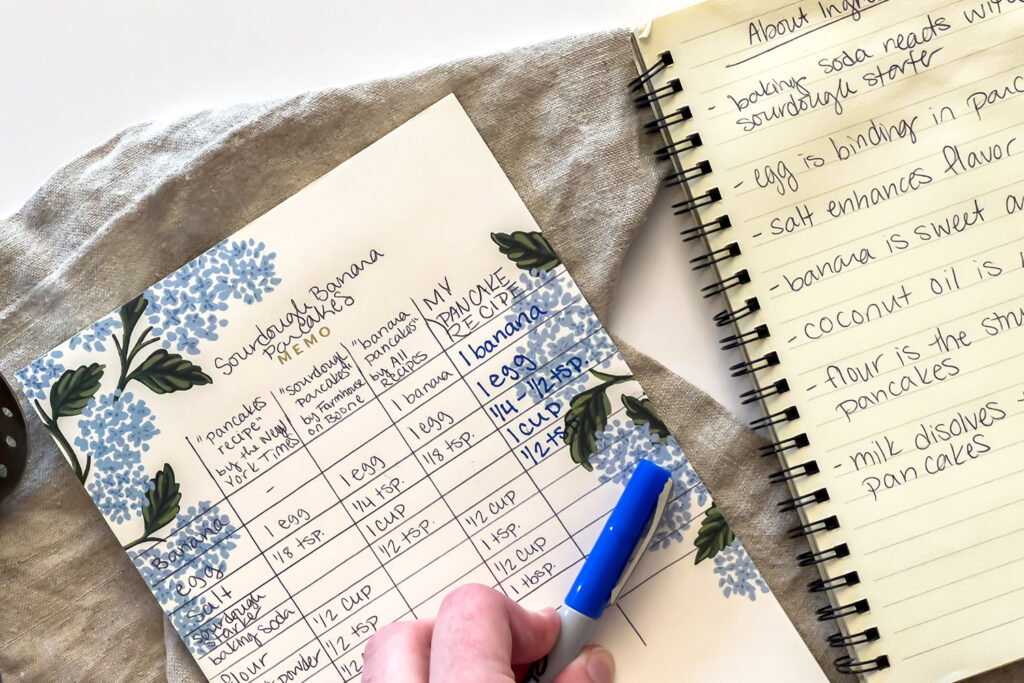
Step 4: Decide on Your Ingredient Amounts
After you’ve learned what the ingredients do, and you have seen other recipe’s ingredient amounts, you are now ready to come up with what you think your ingredient amounts should be.
Simply go down the ingredient chart one-by-one, and make your best guess on how much of that ingredient you will need. You can base this on the other three example recipes, as well as your new knowledge of what each ingredient does.
This doesn’t need to be perfect first try, just make your best guess!
My Sourdough Banana Pancakes Example:
After learning what each ingredient does, I wrote my first draft on how much of each ingredient I thought I would need for a good sourdough banana pancake recipe. This is based on the knowledge I gained in the previous step, as well as the other three recipes on our chart.
For example, as far as the non-sourdough pancake recipes go, they call for flour and a liquid (milk or water). However, sourdough starter already contains both of those, meaning that I can omit both flour and water from my recipe. Similarly, I discovered that baking soda works with sourdough starter to create fluffy pancakes, meaning that the baking powder found in other recipes isn’t needed. Furthermore, I learned that the banana provides both sweetness and moisture to the pancake, meaning that I can omit the honey/sugar as well as the oil that some of the other recipes call for. And as for the salt, tasting the recipe gave me the indication that it needed more salt than the others call for, which you’ll see more about in the last step.
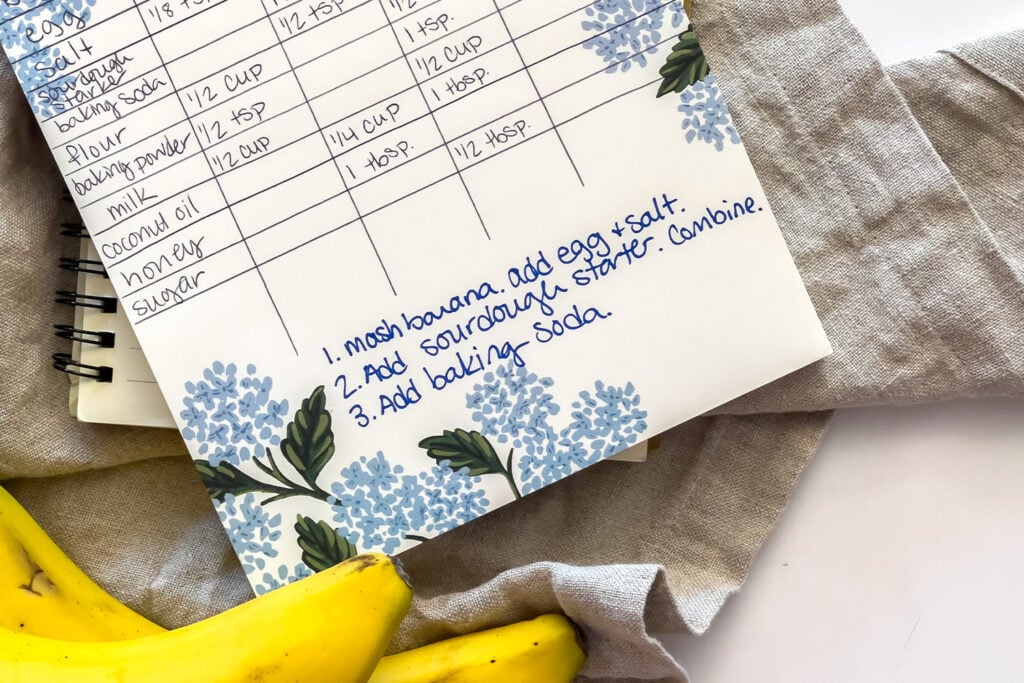
Step 5: Decide on Your Directions
Just like the differences in ingredient amounts, you’ll also notice that each recipe has a slightly different method of coming together.
Maybe if you’re making a cake, you see that some of the recipes tell you to dump all the ingredients in a bowl and mix, while others have you stir different ingredients in different bowls first. Or maybe it says to brown the butter before adding it, or to whip the cream before folding it in, etc.
Just like the ingredient amounts, the directions or methods matter too. Look up why a recipe would say to do a certain step, and then decide on the directions for your recipe!
My Sourdough Banana Pancakes Example:
After deciding on my ingredient amounts, I read the directions of multiple different sourdough pancake recipes. This helped me to formulate my directions for great pancakes that are fluffy and delicious! For example, though some other recipes may tell you to beat the pancake batter, learning that the sourdough starter already contains bubbles means that I would not want to beat it, otherwise it will lose some of that airiness that helps create a light pancake. Likewise, mashing the banana first means that I am not beating bubbles out of the batter while I’m trying to mash the banana. Adding the baking soda last means that everything else is already mixed, and the baking soda can get to work creating a bubbly pancake batter, making for fluffy pancakes.
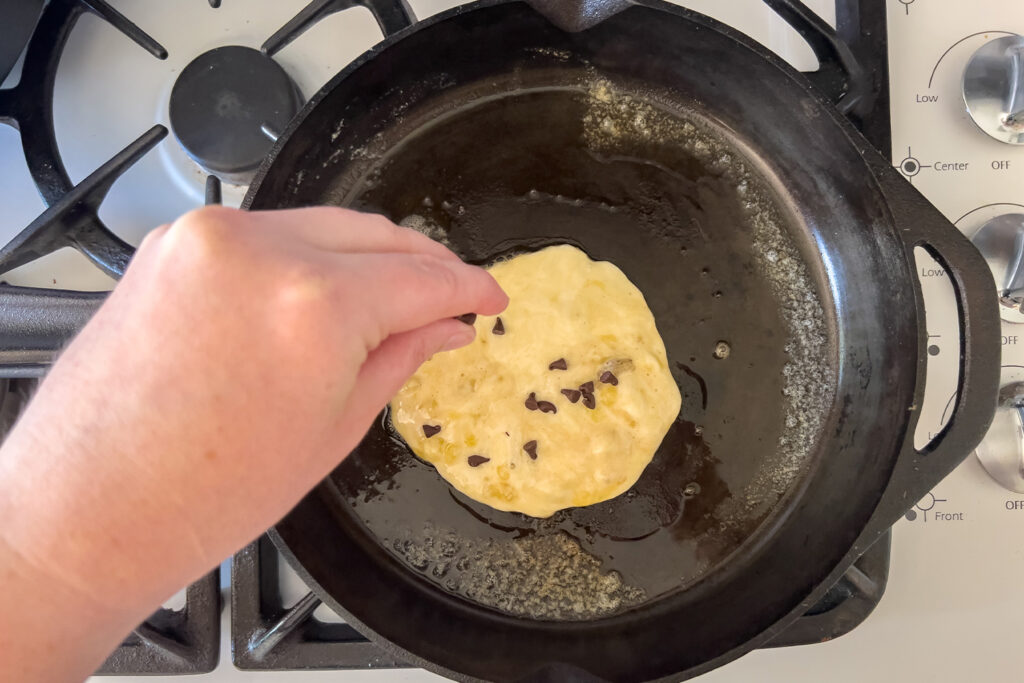
Step 6: Test it Out
There’s no way around this one! Once you’ve got your ingredients and your directions written out, it’s time to see just how good of a recipe you created!
Sometimes, the recipe will turn out flawlessly first try. Other times, it will be a total flop. (Just ask me about my sourdough brownie recipe that turned out like charcoal. Or maybe don’t ask, I’m still a little bitter that my brownie cravings weren’t satisfied that night!).
If your recipe doesn’t turn out the best, don’t give up! It takes time to develop a good recipe, and there’s always room for improvement. Once you’ve followed your own recipe step-by-step, try to see in what ways it could be improved.
Did it not rise enough? Maybe it needs more baking soda.
Did it taste bland? Maybe it needed more salt.
Did it come out too dense? Maybe it had too much liquid.
To help, you can search things like “why is my cake dense”, or “why did my sourdough bread not rise enough”.
Maybe you need to change the ingredient amounts, or maybe you need to adjust your directions. Don’t give up! Make changes, test again, and before you know it you’ll have an original recipe that can be made for a lifetime.
My Sourdough Banana Pancakes Example:
Because I have been using this recipe creation method for a long time, I was able to get a great turnout on my Sourdough Banana Pancakes recipe first try, though I believe that I increased the salt on the final recipe for the best flavor! There are many other recipes though that I have had to heavily tweak, or totally start over altogether. Don’t give up!
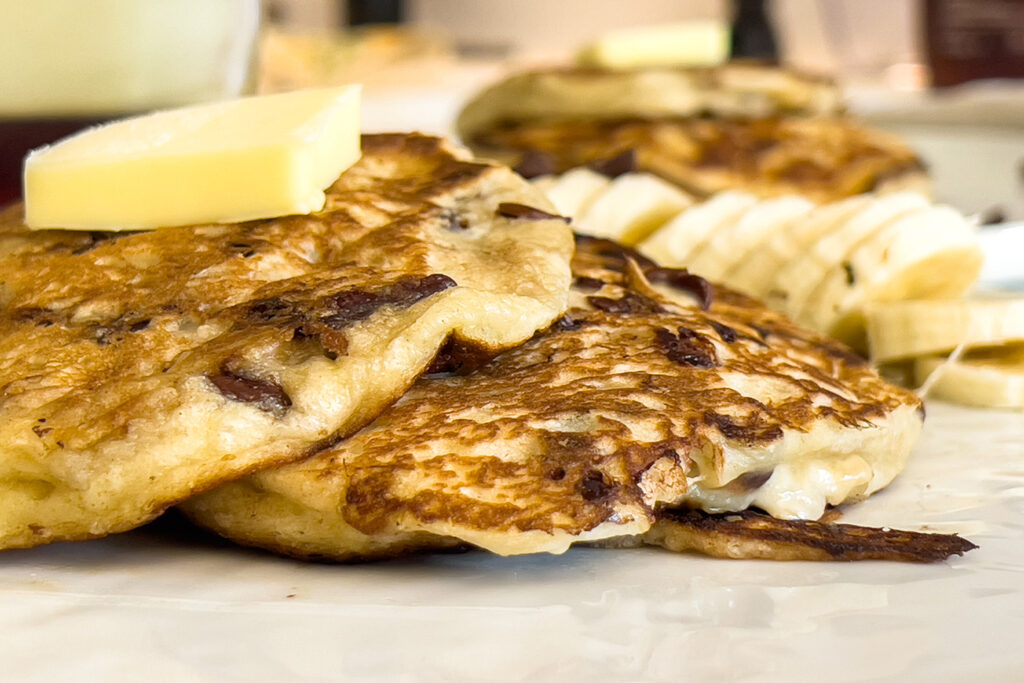
Other Recipes That I Used This Method To Create
Try some of these recipes that I created using this very method!
- Chocolate Simple Syrup Recipe
- Sourdough Peach Cobbler
- Same Day Sourdough Rolls
- Best Sourdough Cinnamon Rolls
- Easy Cannoli Dip
- Sourdough Chicken and Dumplings
You can also use this method on non-food recipes, such as these!
